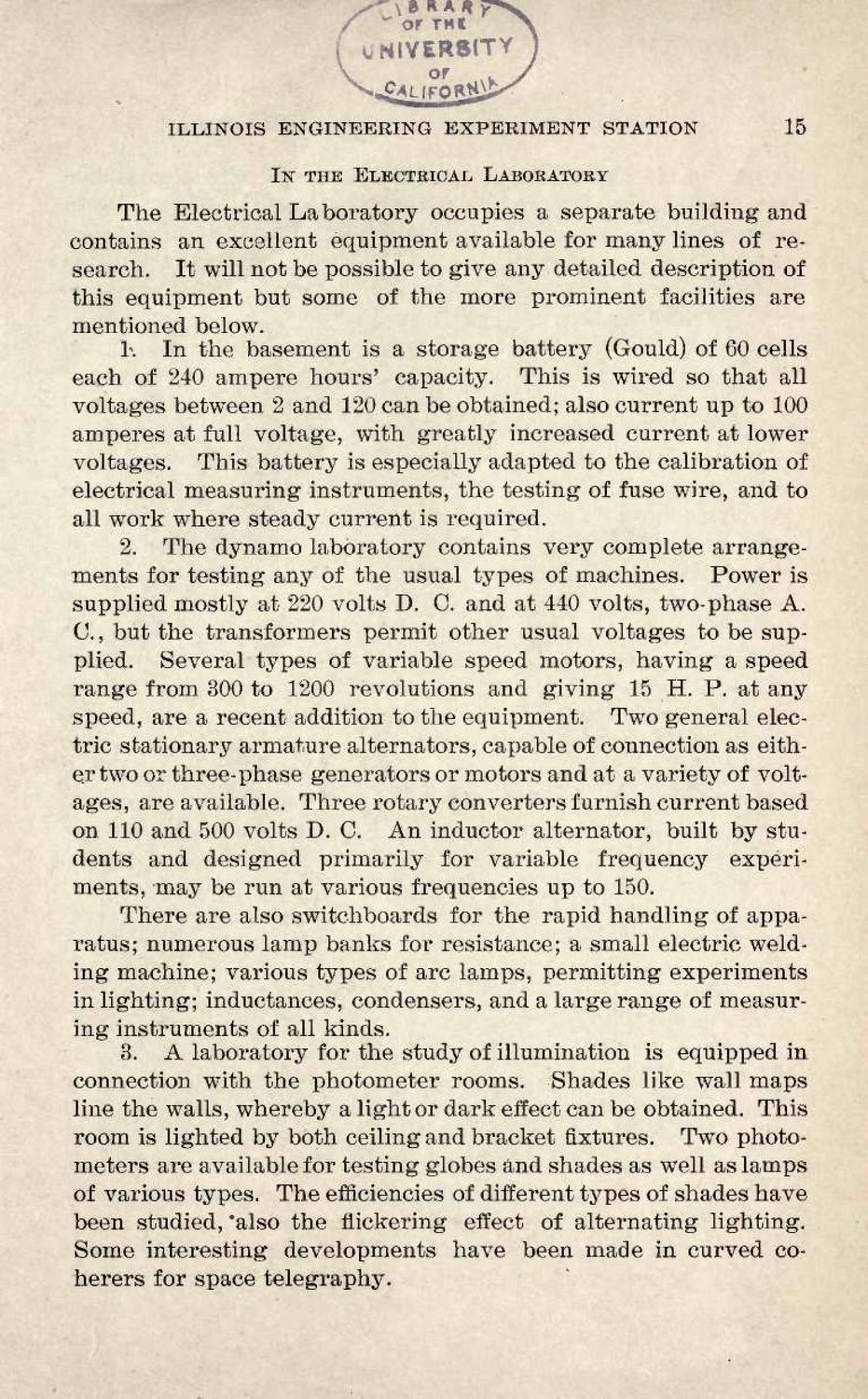| |
| |
Caption: Book - First Years of Engineering Experiment Station (1906)
This is a reduced-resolution page image for fast online browsing.

EXTRACTED TEXT FROM PAGE:
/ o r THt ^V i UNIVERSITY J ILLINOIS ENGINEERING EXPERIMENT STATION I N THE ELECTRICAL LABORATORY 15 The Electrical Laboi'atory occupies a separate building and contains an excellent equipment available for many lines of research. I t will not be possible to give any detailed description of this equipment but some of the more prominent facilities are mentioned below. 1\ In the basement is a storage battery (Gould) of 60 cells each of 240 ampere hours' capacity. This is wired so that all voltages between 2 and 120 can be obtained; also current up to 100 amperes at full voltage, with greatly increased current at lower voltages. This battery is especially adapted to the calibration of electrical measuring instruments, the testing of fuse wire, and to all work where steady current is required. 2. The dynamo laboratory contains very complete arrangements for testing any of the usual types of machines. Power is supplied mostly at 220 volts D. 0. and at 440 volts, two-phase A. C., but the transformers permit other usual voltages to be supplied. Several types of variable speed motors, having a speed range from 300 to 1200 revolutions and giving 15 H. P . at any speed, are a recent addition to the equipment. Two general electric stationary armature alternators, capable of connection as either two or three-phase generators or motors and at a variety of voltages, are available. Three rotary converters furnish current based on 110 and 500 volts D. C. An inductor alternator, built by students and designed primarily for variable frequency experiments, may be run at various frequencies up to 150. There are also switchboards for the rapid handling of apparatus; numerous lamp banks for resistance; a small electric welding machine; various types of arc lamps, permitting experiments in lighting; inductances, condensers, and a large range of measuring instruments of all kinds. 3. A laboratory for the study of illumination is equipped in connection with the photometer rooms. Shades like wall maps line the walls, whereby a light or dark effect can be obtained. This room is lighted by both ceiling and bracket fixtures. Two photometers are available for testing globes and shades as well as lamps of various types. The efficiencies of different types of shades have been studied, 'also the flickering effect of alternating lighting. Some interesting developments have been made in curved coh e r e r s for space telegraphy.
| |